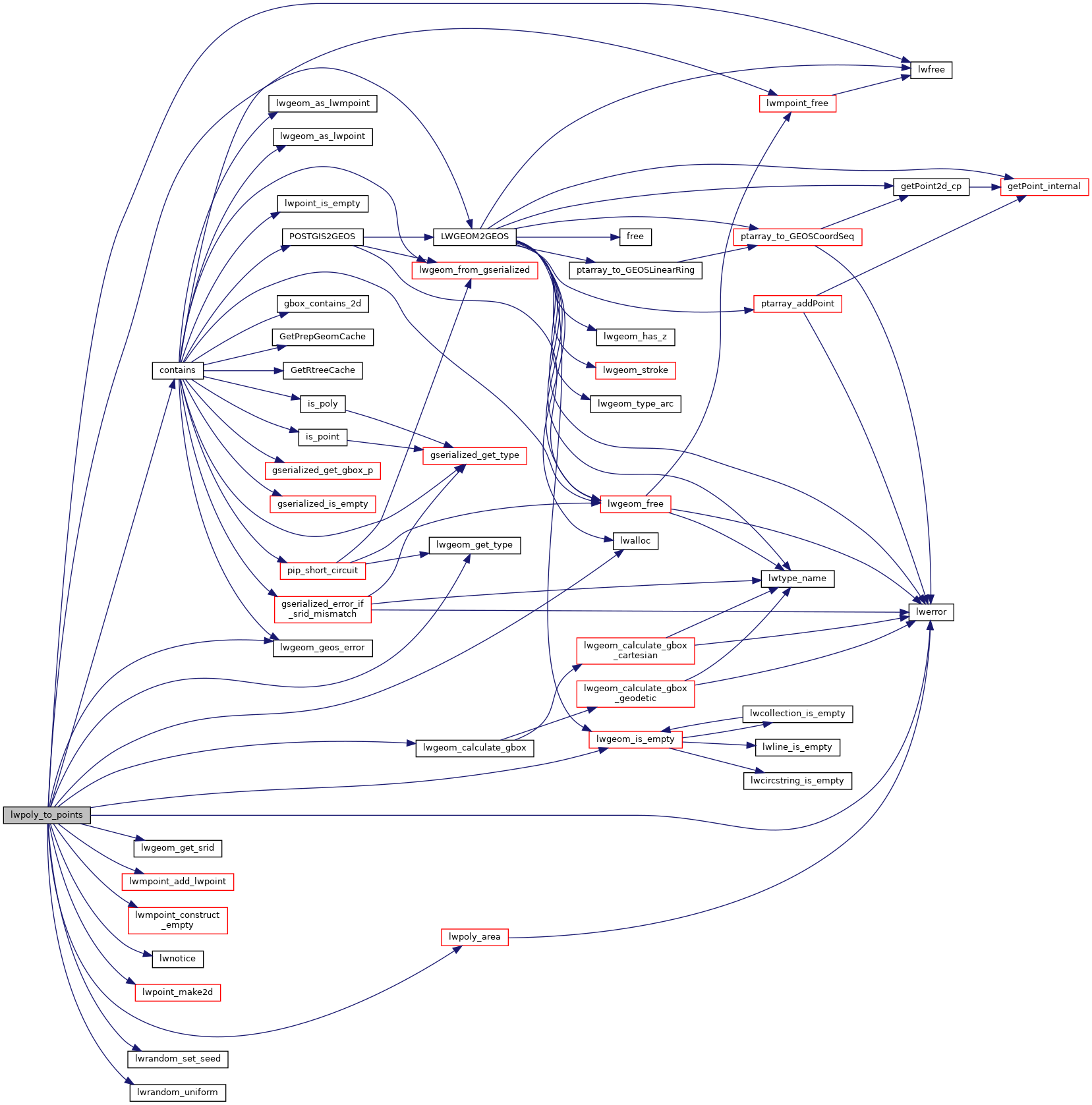1672 double area, bbox_area, bbox_width, bbox_height;
1675 uint32_t sample_npoints, sample_sqrt, sample_width, sample_height;
1676 double sample_cell_size;
1678 uint32_t iterations = 0;
1679 uint32_t npoints_generated = 0;
1680 uint32_t npoints_tested = 0;
1682 const GEOSPreparedGeometry* gprep;
1684 GEOSCoordSequence* gseq;
1689 const size_t size = 2 *
sizeof(int);
1690 char tmp[2 *
sizeof(int)];
1691 const size_t stride = 2 *
sizeof(int);
1695 lwerror(
"%s: only polygons supported", __func__);
1704 bbox = *(lwpoly->
bbox);
1707 bbox_width = bbox.
xmax - bbox.
xmin;
1708 bbox_height = bbox.
ymax - bbox.
ymin;
1709 bbox_area = bbox_width * bbox_height;
1711 if (area == 0.0 || bbox_area == 0.0)
1713 lwerror(
"%s: zero area input polygon, TBD", __func__);
1719 sample_npoints = npoints *
FP_MIN(bbox_area / area, 10000.0);
1724 sample_sqrt = lround(sqrt(sample_npoints));
1725 if (sample_sqrt == 0)
1729 if (bbox_width > bbox_height)
1731 sample_width = sample_sqrt;
1732 sample_height = ceil((
double)sample_npoints / (
double)sample_width);
1733 sample_cell_size = bbox_width / sample_width;
1737 sample_height = sample_sqrt;
1738 sample_width = ceil((
double)sample_npoints / (
double)sample_height);
1739 sample_cell_size = bbox_height / sample_height;
1750 gprep = GEOSPrepare(g);
1764 cells =
lwalloc(2 *
sizeof(
int) * sample_height * sample_width);
1765 for (i = 0; i < sample_width; i++)
1767 for (j = 0; j < sample_height; j++)
1769 cells[2 * (i * sample_height + j)] = i;
1770 cells[2 * (i * sample_height + j) + 1] = j;
1775 n = sample_height * sample_width;
1778 for (i = n - 1; i > 0; i--)
1782 memcpy(tmp, (
char *)cells + j * stride, size);
1783 memcpy((
char *)cells + j * stride, (
char *)cells + i * stride, size);
1784 memcpy((
char *)cells + i * stride, tmp, size);
1789 while (npoints_generated < npoints)
1792 for (i = 0; i < sample_width * sample_height; i++)
1795 double y = bbox.
ymin + cells[2 * i] * sample_cell_size;
1796 double x = bbox.
xmin + cells[2 * i + 1] * sample_cell_size;
1799 if (
x >= bbox.
xmax ||
y >= bbox.
ymax)
continue;
1801 gseq = GEOSCoordSeq_create(1, 2);
1802 #if POSTGIS_GEOS_VERSION < 30800
1803 GEOSCoordSeq_setX(gseq, 0,
x);
1804 GEOSCoordSeq_setY(gseq, 0,
y);
1806 GEOSCoordSeq_setXY(gseq, 0,
x,
y);
1808 gpt = GEOSGeom_createPoint(gseq);
1810 contains = GEOSPreparedIntersects(gprep, gpt);
1812 GEOSGeom_destroy(gpt);
1816 GEOSPreparedGeom_destroy(gprep);
1817 GEOSGeom_destroy(g);
1823 npoints_generated++;
1825 if (npoints_generated == npoints)
1834 if (npoints_tested % 10000 == 0)
1835 LW_ON_INTERRUPT(GEOSPreparedGeom_destroy(gprep); GEOSGeom_destroy(g);
return NULL);
1839 if (done || iterations > 100)
break;
1842 GEOSPreparedGeom_destroy(gprep);
1843 GEOSGeom_destroy(g);
char lwgeom_geos_errmsg[LWGEOM_GEOS_ERRMSG_MAXSIZE]
GEOSGeometry * LWGEOM2GEOS(const LWGEOM *lwgeom, uint8_t autofix)
void lwgeom_geos_error(const char *fmt,...)
int32_t lwgeom_get_srid(const LWGEOM *geom)
Return SRID number.
LWPOINT * lwpoint_make2d(int32_t srid, double x, double y)
LWMPOINT * lwmpoint_add_lwpoint(LWMPOINT *mobj, const LWPOINT *obj)
LWMPOINT * lwmpoint_construct_empty(int32_t srid, char hasz, char hasm)
int lwgeom_calculate_gbox(const LWGEOM *lwgeom, GBOX *gbox)
Calculate bounding box of a geometry, automatically taking into account whether it is cartesian or ge...
void * lwalloc(size_t size)
#define LW_ON_INTERRUPT(x)
double lwpoly_area(const LWPOLY *poly)
Find the area of the outer ring - sum (area of inner rings).
void lwerror(const char *fmt,...)
Write a notice out to the error handler.
void lwnotice(const char *fmt,...)
Write a notice out to the notice handler.
static uint32_t lwgeom_get_type(const LWGEOM *geom)
Return LWTYPE number.
static int lwgeom_is_empty(const LWGEOM *geom)
Return true or false depending on whether a geometry is an "empty" geometry (no vertices members)
void lwrandom_set_seed(int32_t seed)
double lwrandom_uniform(void)
Datum contains(PG_FUNCTION_ARGS)

